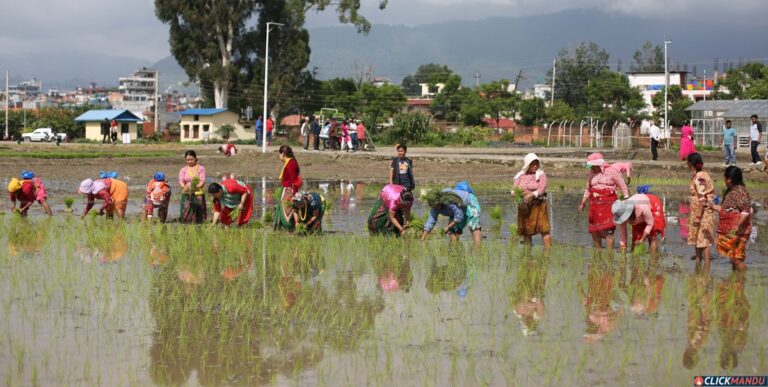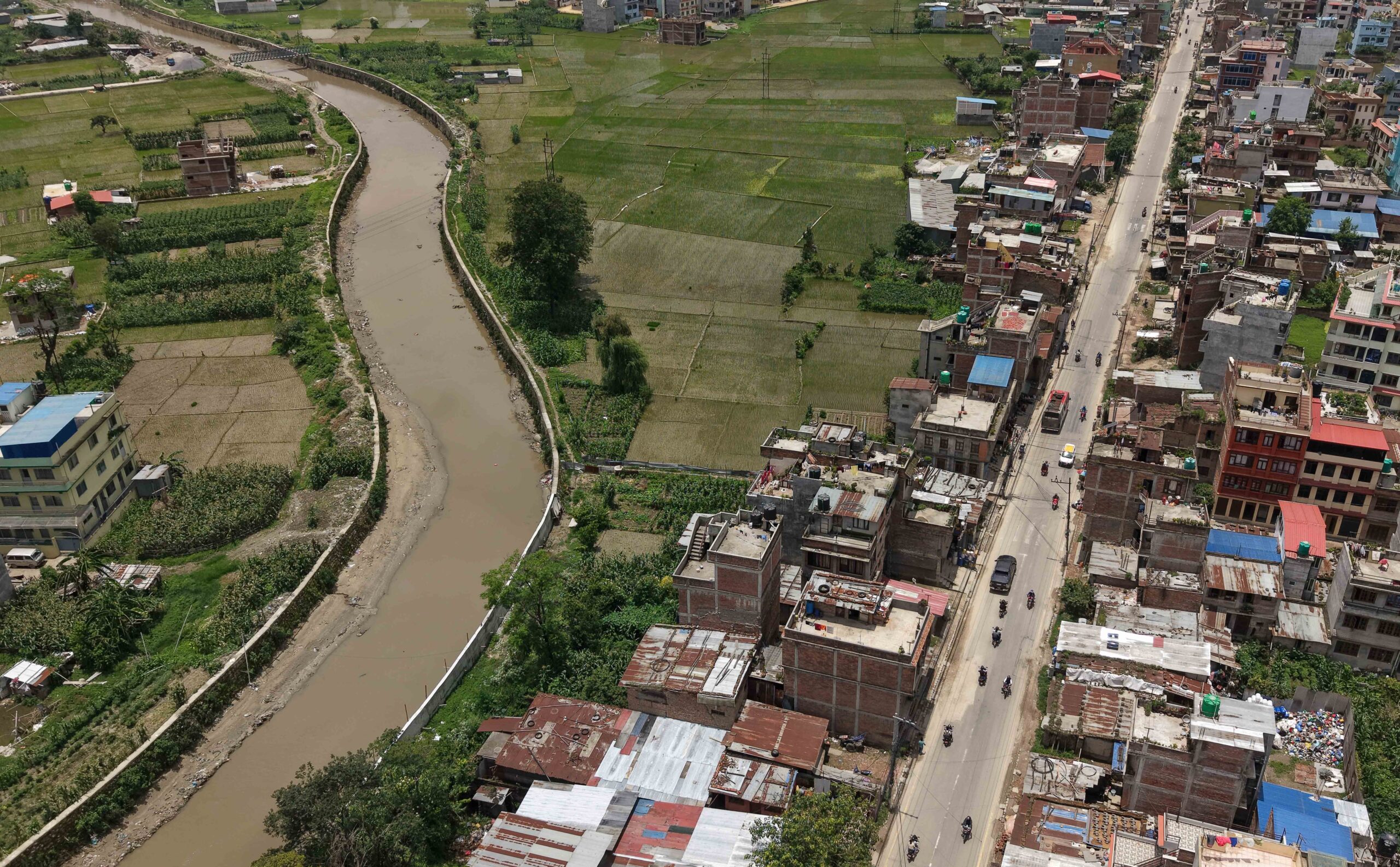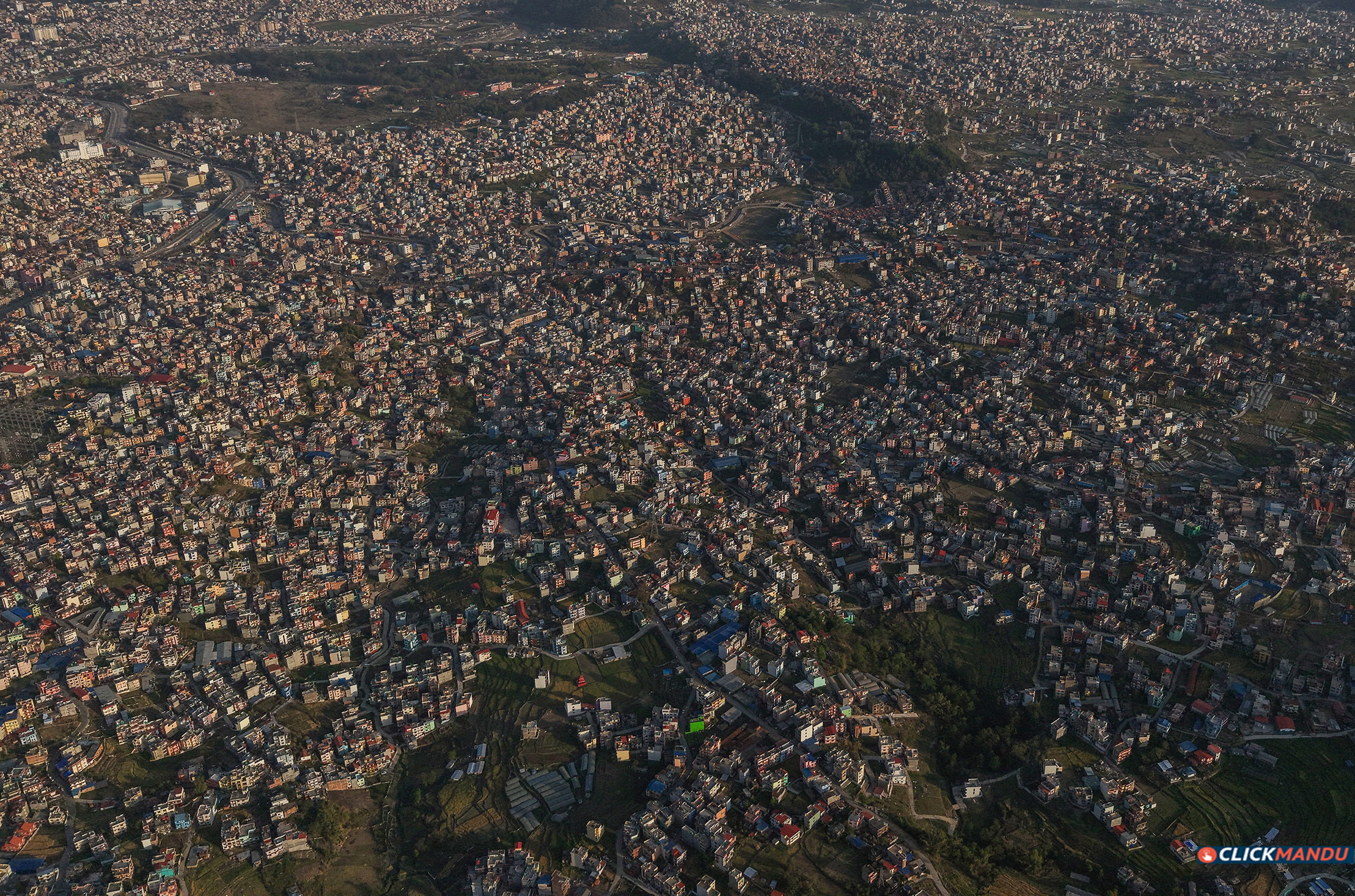
Kathmandu: Today, on Asar 15 (June 29), Nepal is celebrating the 22nd National Paddy Day under the theme “Food Security and Self-reliance through Paddy Farming.”
Asar 15 is considered one of the most important days of the year for farmers. As of Friday, Asar 13, paddy transplantation has been completed on 15.6% of the total targeted area, according to the Department of Agriculture.
Paddy is Nepal’s primary food crop, occupying about 80% of the total food crop consumption in the country.
Although the government has undertaken various initiatives to increase paddy production and productivity, the statistics related to rice imports are still alarming. According to the Department of Customs, Nepal imported rice worth nearly NPR 39 billion in the first 11 months of the current fiscal year. During this period, 261.9 million kilograms of paddy were imported.
Nepal has an annual demand of approximately 7 million metric tons of paddy. However, there is a shortfall of about 1 million metric tons, and between 1.2 to 1.5 million metric tons of paddy and rice are imported annually.

In the current fiscal year 2081/82 BS, paddy cultivation has been carried out on 1,420,636 hectares of land across the country. The Nepal Agricultural Research Council has registered more than 140 varieties of paddy.
Although the soil in the Kathmandu Valley is highly fertile and suitable for agriculture, unplanned urbanization and land fragmentation have led to the conversion of farmlands into residential areas.
While some traditional settlements and villages in the Valley still practice farming, many other areas are facing a shortage of arable land.
The construction of houses on cultivable land has further increased dependency on rice imports.
Not just in Kathmandu Valley but across rural areas as well, migration and depopulation have resulted in arable land lying fallow.



प्रतिक्रिया